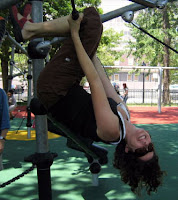One of the things I’ve learned from work is around setting expectations. The work that we do is often ambiguous and we often take our clients through a process is is scary, uncontrollable and unlike anything they’ve ever been involved in before. And we need to get through that process so that we can generate ideas that are both truly new and really good business ideas. (It turns out its easy to come up with ideas that are new and bad, but that’s a whole different post.)
One way that we address the issue of clients calling in a panic about the process is to set expectations as soon as the project begins. We share a document called The Emotional Rollercoaster that gives them a sense of what they’re likely to feel, when. It highlights ups and downs that we’ve seen clients go through time and time again. This is a great opening into a conversation about the emotional side of innovation. It also provides a tool for us to talk about during the moments when people really begin to panic. Reminding them that it’s common and necessary doesn’t ease the pain, but it makes the pain more bearable.
The conversations I have with my kids are, of course, a little less heady. But kids require the same kinds of expectation setting so that they can be emotionally prepared for what’s coming next. That applies to little things: I always have to warn them in advance when I’m about to cut a bagel in half and give them each half a bagel instead of a whole one. And it applies to the big things: their nanny, grandmother, father and I talked a lot about what would happen when they started school and developed an entirely new routine. While helping them anticipate what they’re going to experience and potentially feel doesn’t always mean I can help them avoid feeling it, it does leave the door open to helping them make sense of their emotion and, ultimately, get past it. Which means we can spend less time focusing on the emotional cost of an activity and more time doing it.
Wednesday, October 17, 2007
Subscribe to:
Post Comments (Atom)


No comments:
Post a Comment